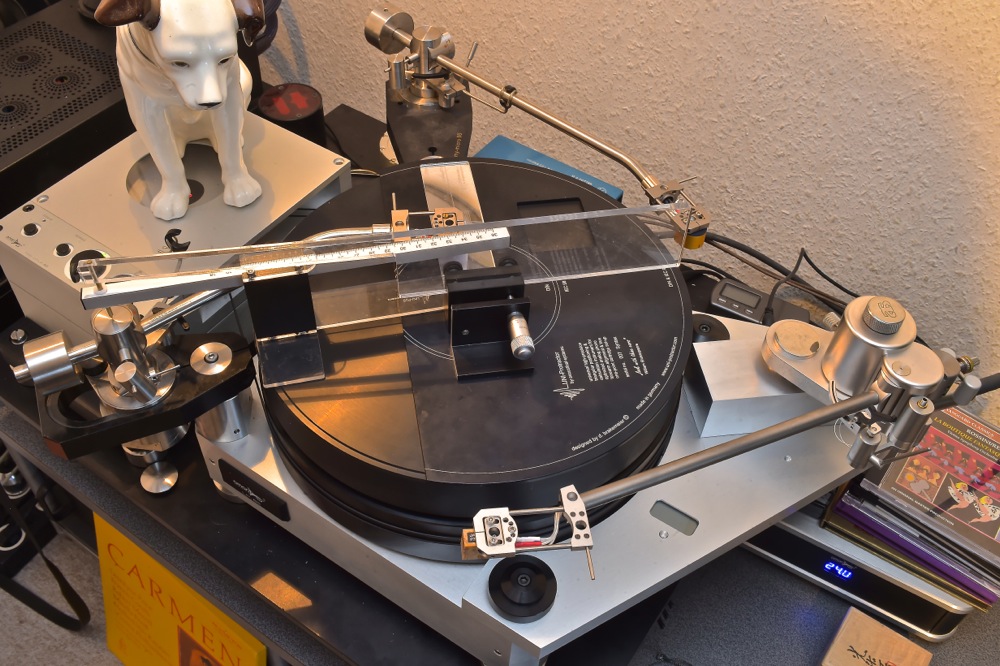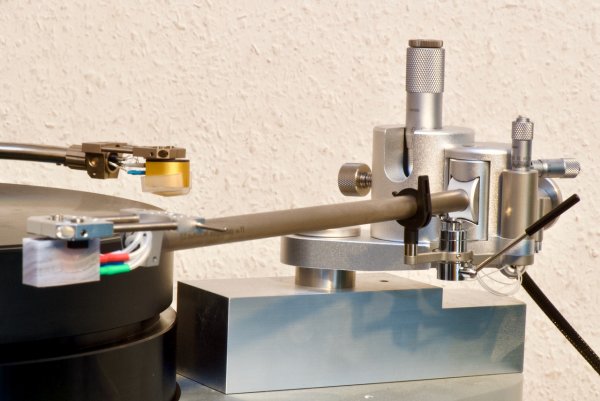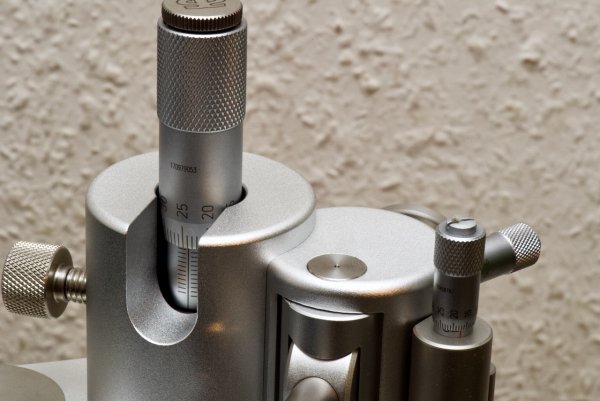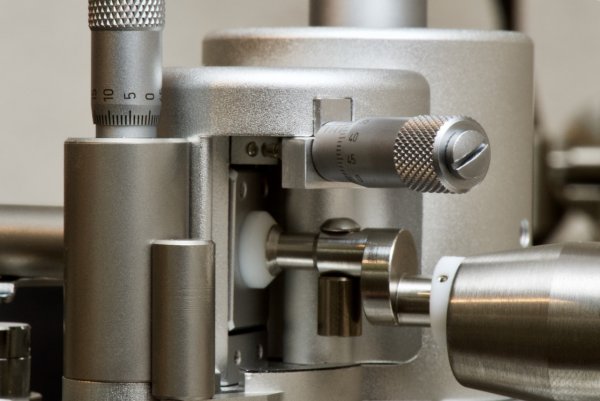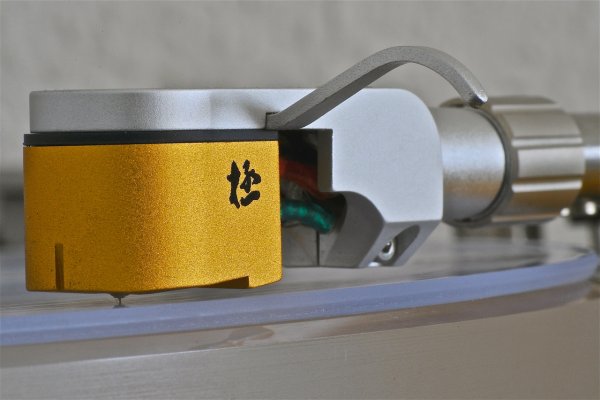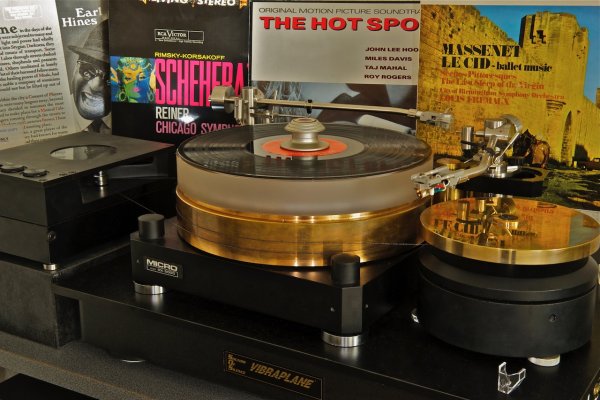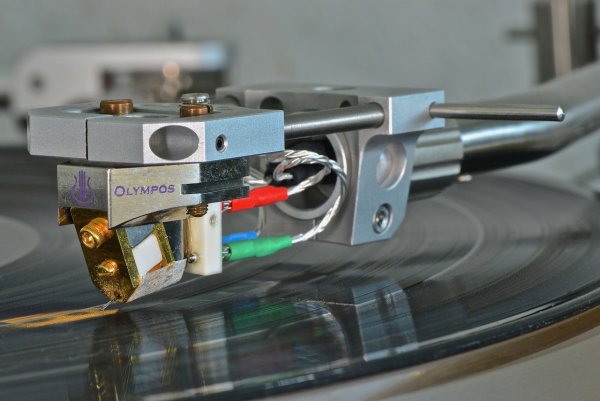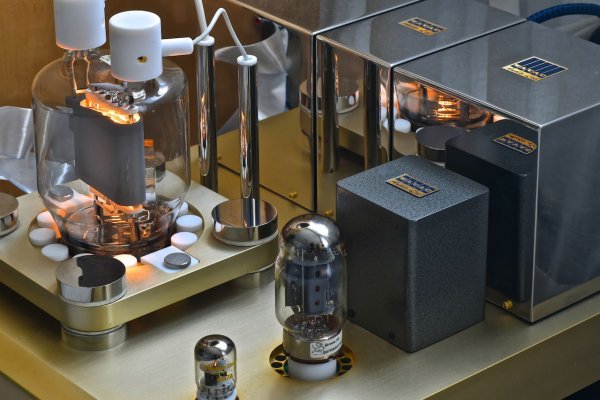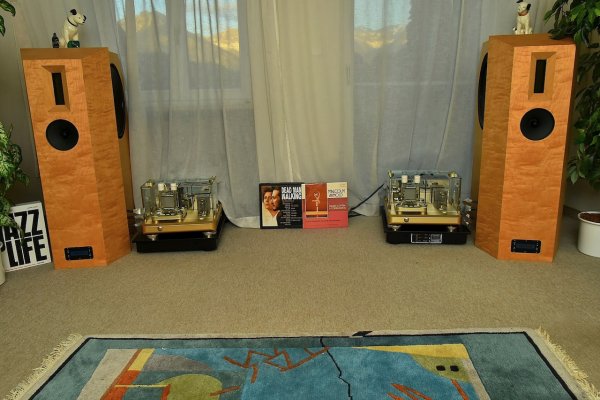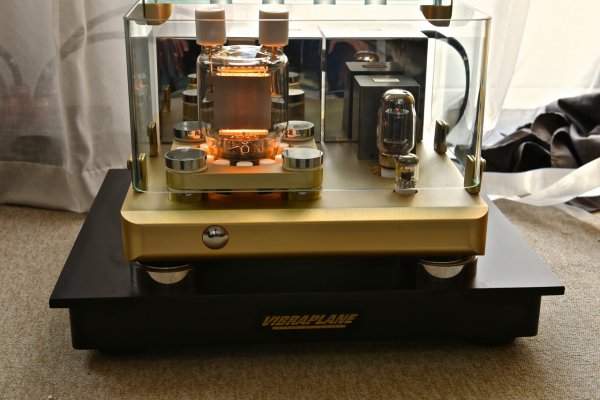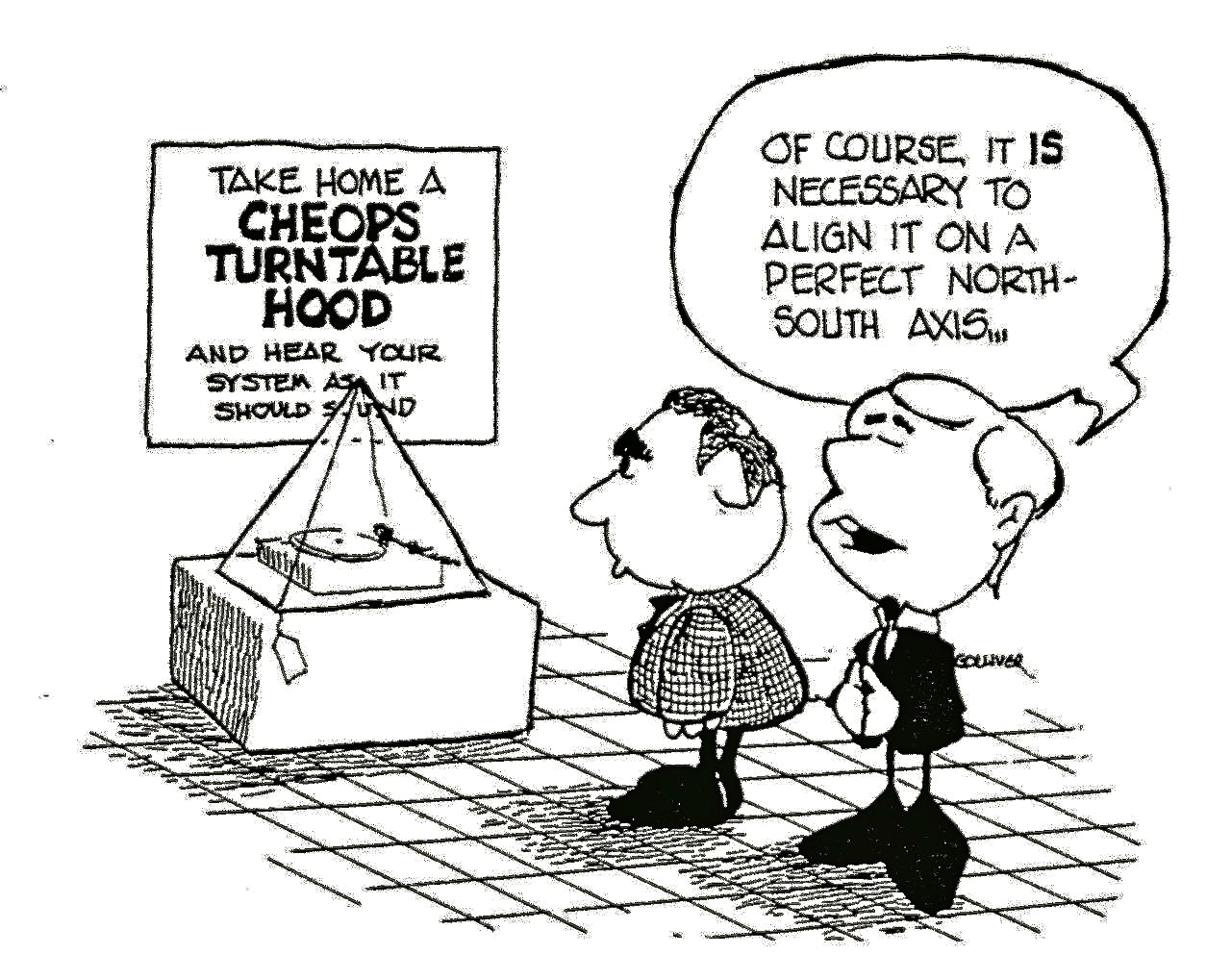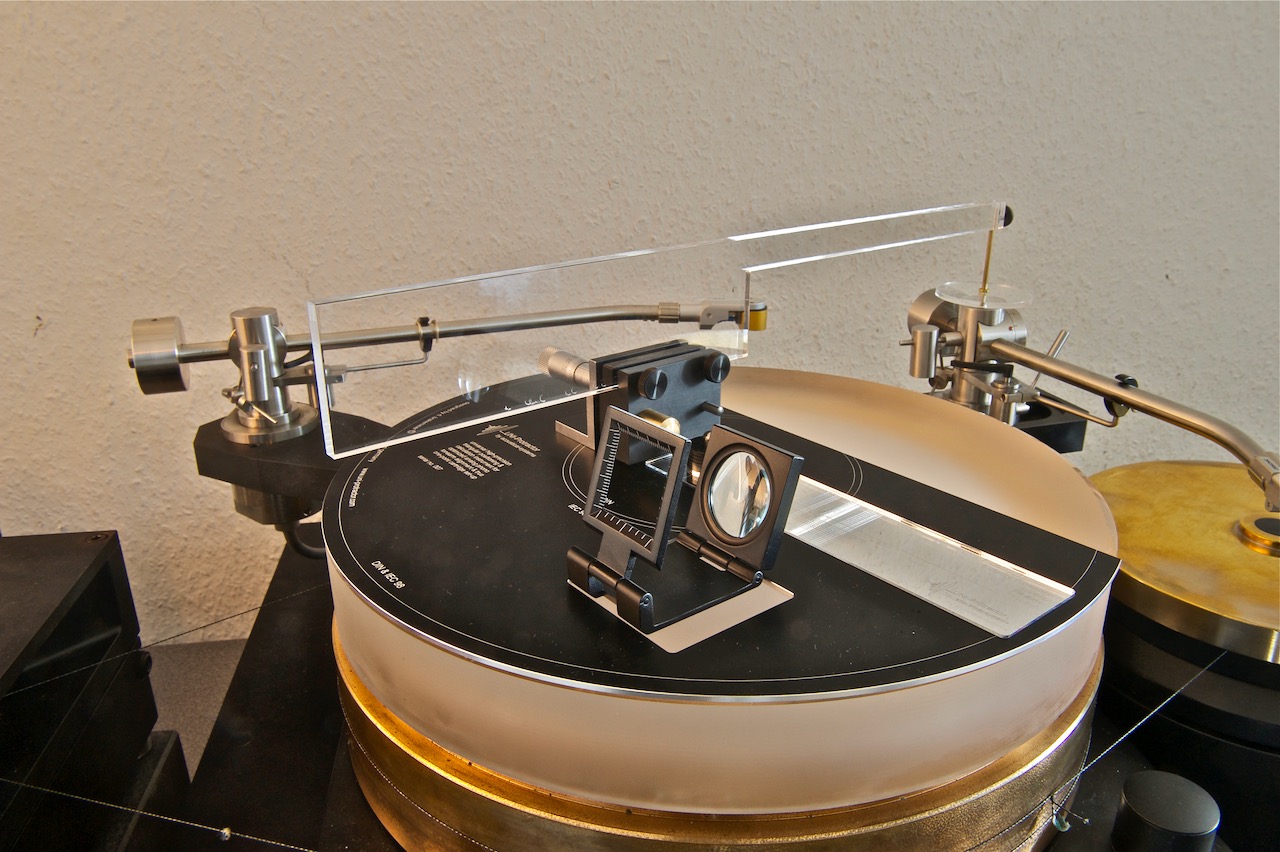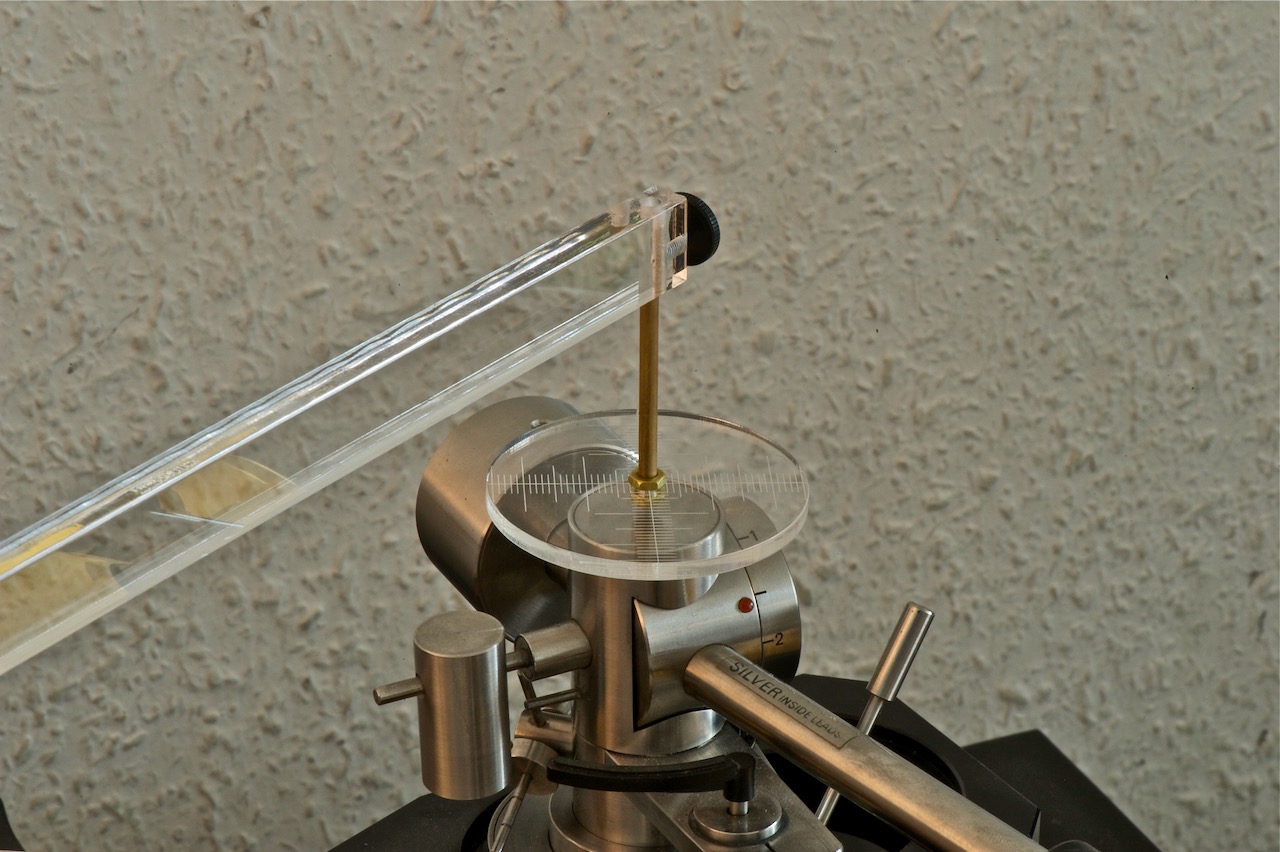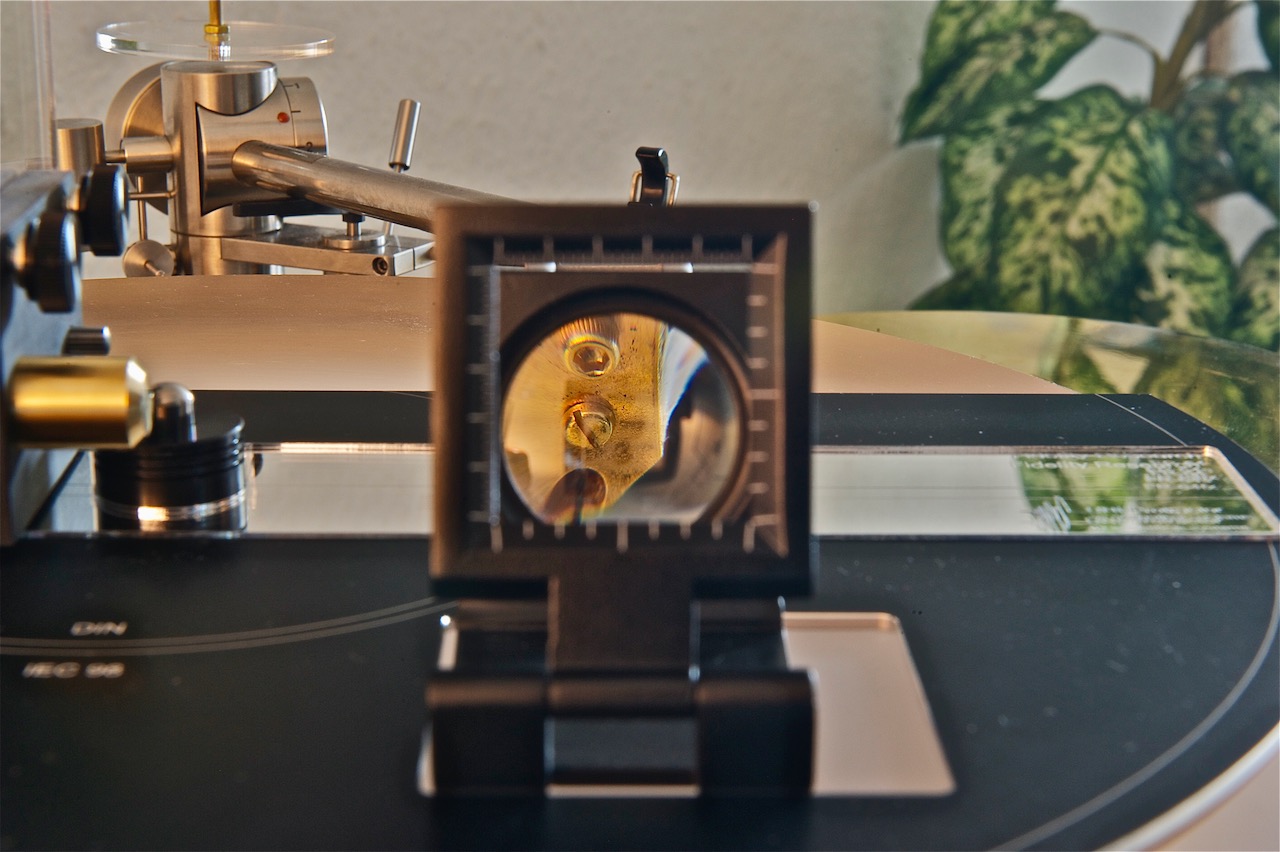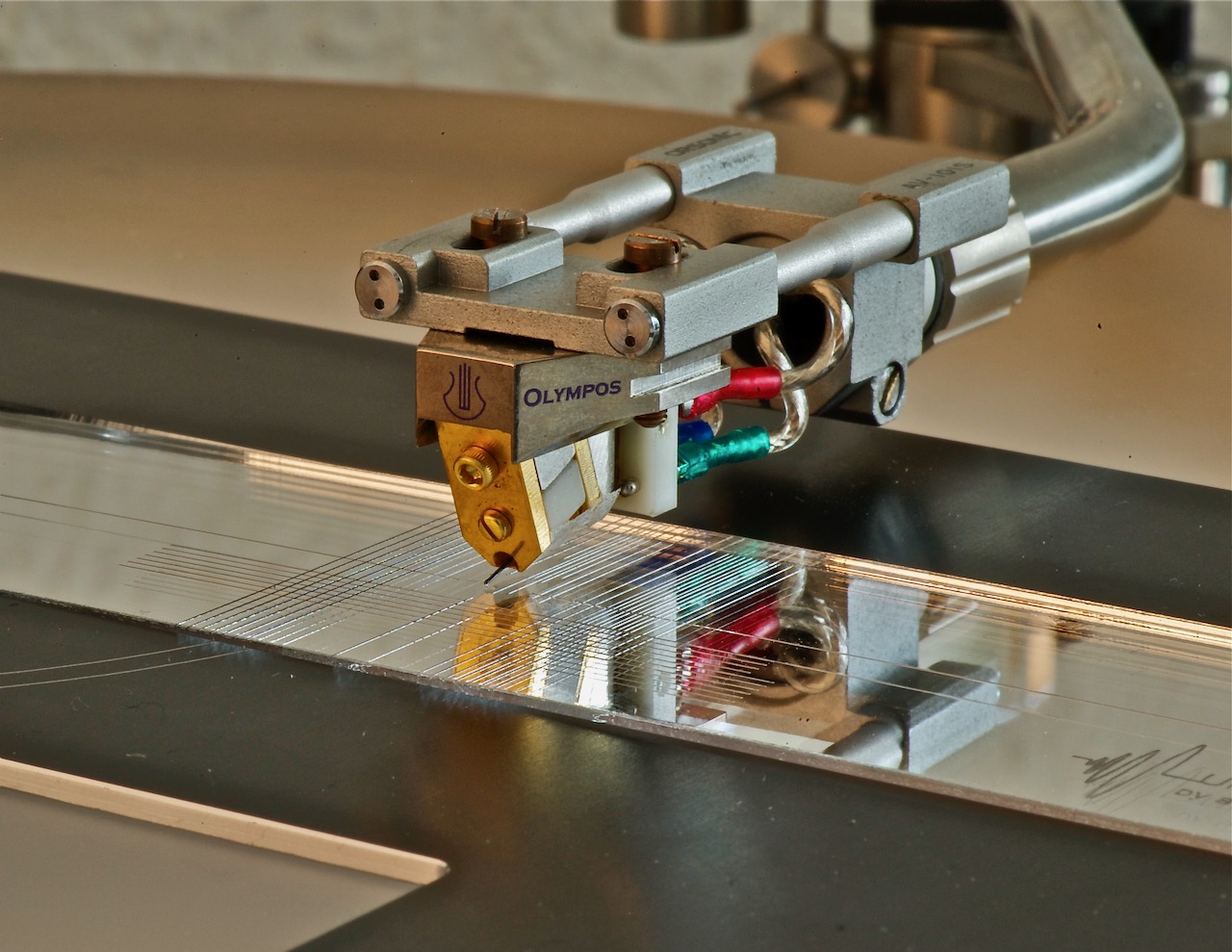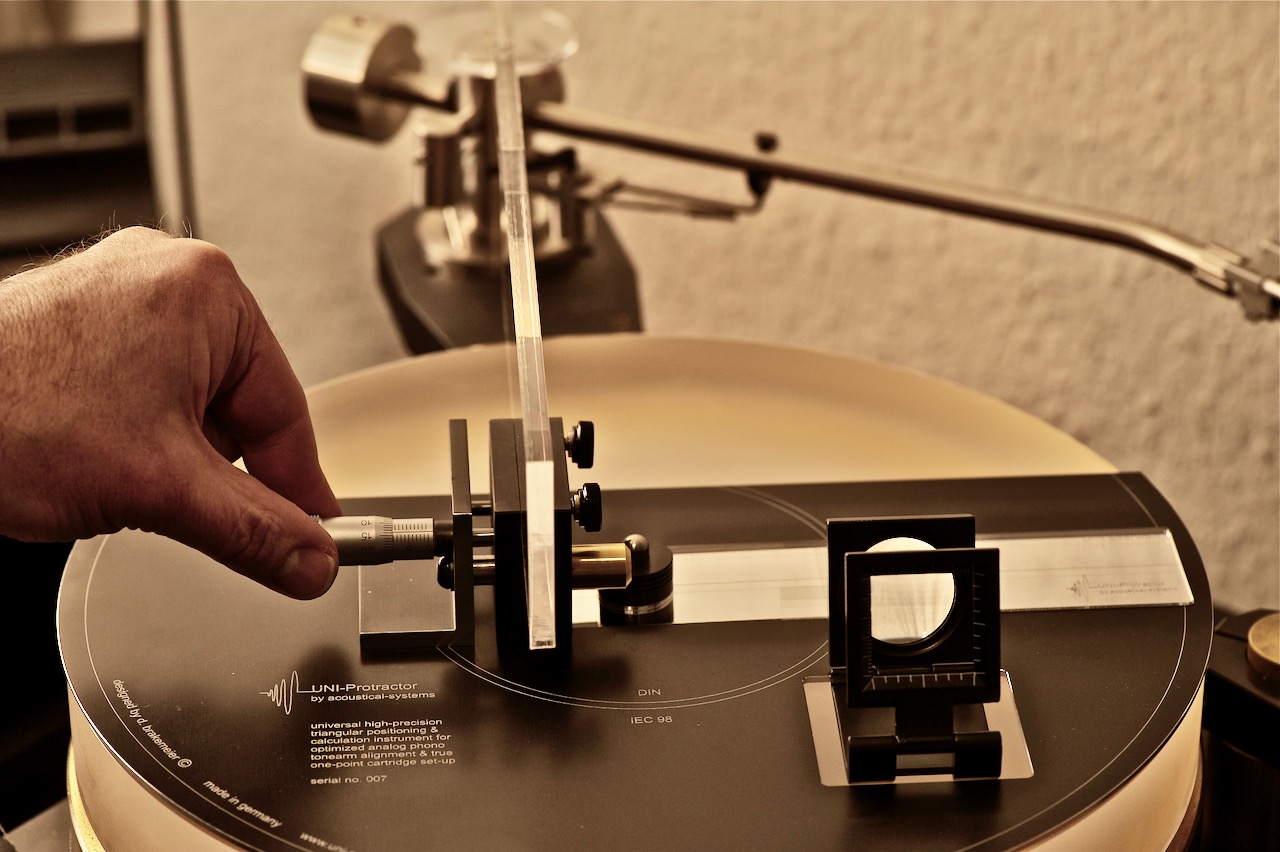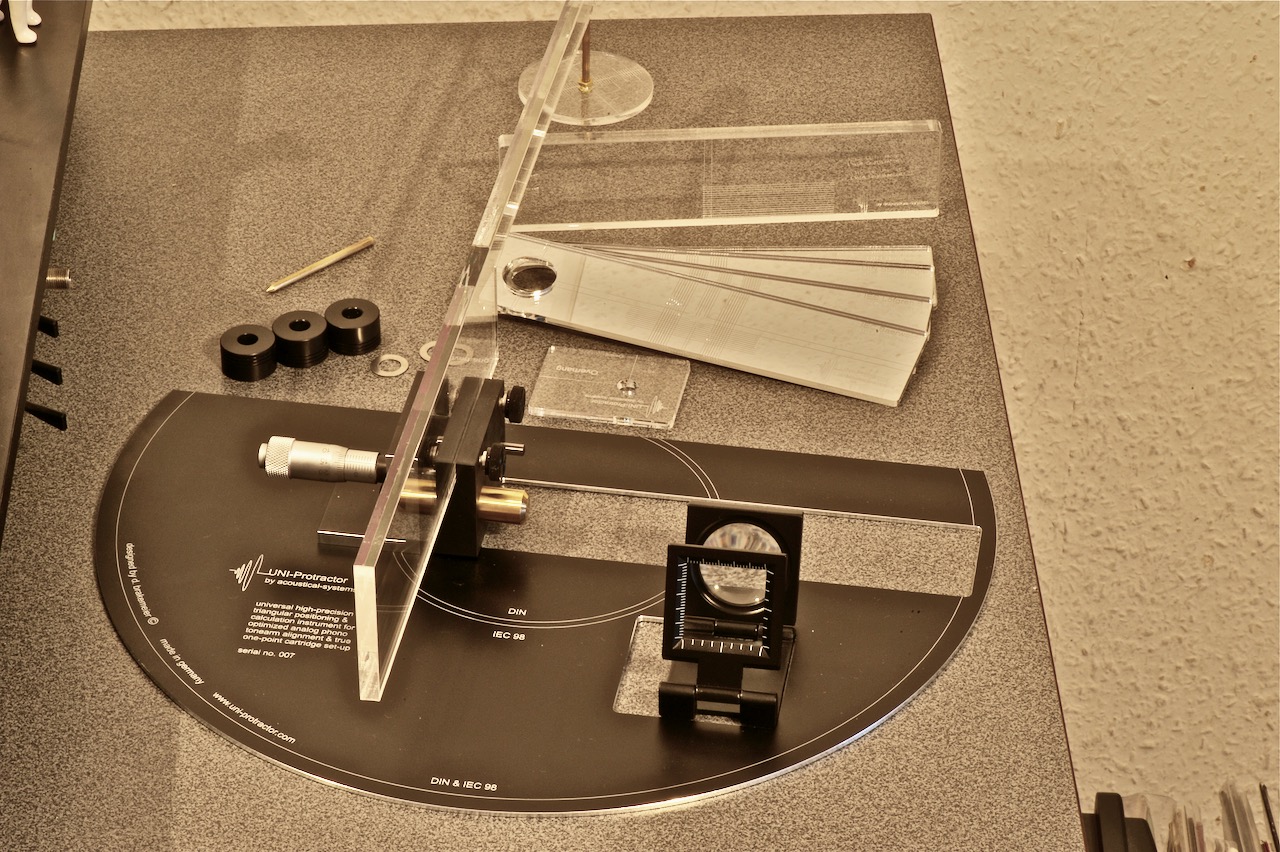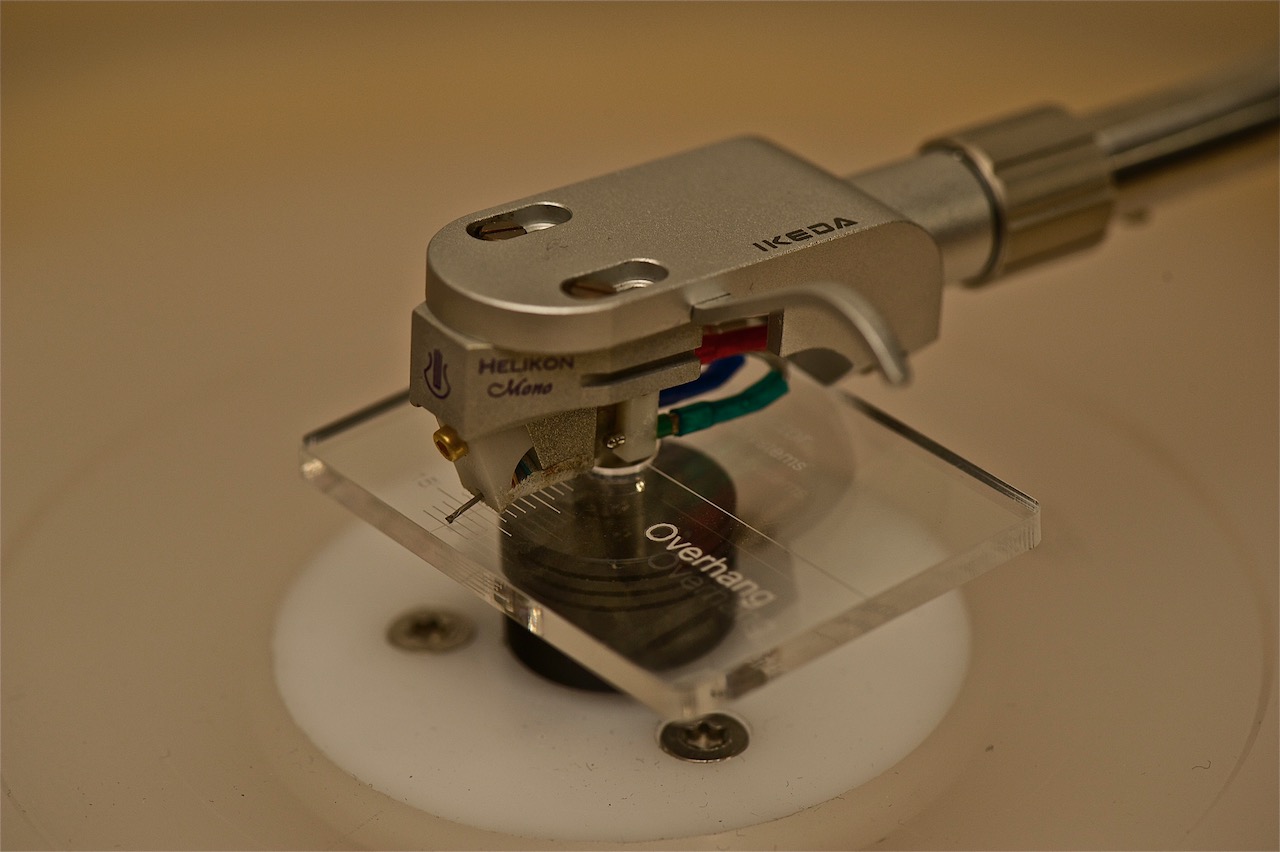How does one use that alignment device on an SME 3012-R (circa 1981) ? There is no dimple on the pivot tower to put the nail point in for the pivot to spindle adjustment.
Please note that these are claims from the device manufacturer regarding the UNI-DIN curve and not universal truth. WhileBaerwald and/or Loefgren curves aren't optimum with certain tonearms(not sure if UNi-DIN is either) it has nothing to do with the groove bull crap and everything to do with arm's geometry. This contraption doesn't work with SME's sled base where you slide the entire arm to setup the overhang, this tractor works off a fixed point and you have to adjust the overhang in the headshell, opposite of SME's ingenious design. The Graham arm comes with it's own jig so you don't need it for that arm either. The Smartractor is just another alignment tool for the tool box and by no means does it render other protractors and curves obsolete.
Back to the Dark Side of Life …
….. Cartridge alignment needs great precision as 0.5 mm is too great an error. It is about getting the very best possible from a given cartridge/tonearm combination. To get that, the best possible geometrical set-up and alignment is the very first step. What is lost here to imperfect alignment can’t be recovered anywhere else in the audio chain. I want to illustrate the point by adapting the dimensions to our daily world. A modern stylus does feature a polished area – and it is actually that area alone which should have contact to the groove’s wall – of 1-2 ?m to 5-6 ?m.
A 12“ tonearm is approximately 300 mm effective length. Now what if we have an error of say one tiny 0.5 mm away from the calculated point of zero tangential error? No big deal and well within the tolerances of many alignment templates. Most “sweet spots“ on templates are already double that figure in diameter. Now let me transform those dimensions to our scale.
We amplify every figure in the tonearm and stylus by 1000x. Now the tonearm is 300 meter long. The cartridge now has the size of a big family house. And the polished area of the cartridge? It is now 1-2 mm to 5-6 mm. And hanging at the tip of a 300 meter long tonearm......... That 0.5 mm error we were talking about is now 50 cm - or 1?2 meter - off the perfect line.
You should know what to do to get the best out of the investment. Not enough, you should know what kind of Installation you want to have, depending on your records. There can be huge differences.
From 1938 to 2010 - nothing changed in more than 70 years? Phono tonearm geometry is born: 1937/38
In the years around the start of the Second World War, gifted engineers with strong backgrounds in mathematics published in quick succession their groundbreaking calculations for best approaching a theoretical tangential zero tracking error with a pivot tonearm. These calculations became the industry standard for years to come – though as I’ll explain later, they’re not the benchmark we should be using today.
Erik G. Loefgren and H.G. Baerwald published, in 1938 and 1941 respectively, the definitive calculations based on B. Olney’s initial essay in Electronics, November 1937.
They came to the very same best possible approximation of a circle segment to a given straight line. Their Euclidean calculations resulted in a tangential curve, which set the standard as being the theoretical and practical best geometric compromise. Phono tonearm overhang and offset angle were established as essential features in order for a pivot tonearm to reach the best possible geometry, thus giving the lowest derivation from the tangential ideal for that 70 to 95 mm of grooved radius in a 12-inch record. The final result was the best combination of lowest maximum and lowest average distortion in the tracking due to tangential derivation– or tracking error. The analytics of B.B. Bauer in 1945 and John Seagrave in the mid-1950s reconfirmed Loefgren’s and Baerwald’s theory and results, firmly establishing the tangential curve they calculated as the best compromise in geometric phono tonearm set-up.
This is an essential part of phono analog history.
The tangential curve of 1938/1941 – today named Baerwald DIN or Loefgren A DIN – was the indispensable foundation of high fidelity sound in phono records. The tangential curve calculated by these pioneers of high fidelity analog sound was mathematically as close to perfect as possible, and their contribution to the quality of phonograph reproduction can’t be valued too highly. However, the record groove Loefgren and Baerwald did their calculation for was not the record groove we (at least, most of us) play today – far from it. Aside from the mere outer dimensions of the medium (diameter), there are hardly any similarities in the two grooves.
Back in their day, the state of the art was the 78 rpm shellac mono record of the 1930s.The groove of a shellac mono record is different in most every way from a stereo microgroove record dating 1958 or later.
78 rpm shellac mono record vs. 33 1/3 stereo microgroove
The modern stereo microgroove is considerably smaller. Further, it is engraved with a much finer and more complex three-dimensional encoding. It runs with less speed, resulting in further reduction of available space for a given amount of recorded time. Likewise, the stylus and polished area are magnitudes smaller and more refined today compared to the days of Loefgren and Baerwald. So the stereo microgroove record is not the medium Loefgren and Baerwald faced in the late 1930s, and the modern 12-inch microgroove long-playing (“LP”) record is certainly not the medium they did their calculations for. The stereo microgroove is so different in most every way that it requires a closer look and a different approach to reach a possible optimum in sound decoding when tracking it. I had been using the original Dennesen Soundtractor since 2005: a solid metal device that allowed for Baerwald IEC alignment independent of the mounting distance. Most, if not all, better tonearm alignment tools available today are based on this ingenious design, which was years ahead of its time.
There are RCA Living Stereo LSC, Mercury Living Presence SR, EMI ASD, DECCA SXL, Columbia SAX, Impulse AS, Blue Note, Columbia 6-eye CS, 90 / 100 / 120 / 180/ 200gr gr. Vinyl, compresed Masterings…… and Reissues.
Many of these recordings have long grooves – cut fairly close to the paper label and thus often exceeding the “official” limits of both DIN (inner groove limit record radius 57.5 mm) as well as IEC (60 mm, measured from center of the record spindle hole).This fact inevitably means fairly high tangential derivation in the last minutes of many records – in other words, high distortion figures in those important areas of the music where you need/want it the least.
Why in those areas?
Say you have a 33 1/3 microgroove on an LP that is indeed spinning with a constant speed of 33 1/3 rpm. The beginning of the groove, at about the 145 mm point of the LP radius, features about 100 cm groove-space for one minute of recorded signal. That means lots of space and the best conditions for the stylus because its fairly easy going. (Imagine a straight new three- lane highway, early on a Sunday morning in mid-summer, and you get the picture.)
Close towards the inner label – say at the IEC limit 60 mm radius – the available space for one minute of engraved signal is only about 33 cm, squeezing the information into one-third the space, with an increased curvature and at a point where the tangential error of the tangential curve of Baerwald and Loefgren is in a steep rise. For the stylus of your cartridge this is no longer the three-lane highway it tracked 20 minutes ago. That highway has turned into a narrow serpentine in the Chilean Andes – a nightmare of a road that it has to drive with maximum speed, even while the edge of its chassis is hemmed in. What is happening in these last minutes where the conditions for the stylus get increasingly rough and tight?
In classical music – as well as in jazz and rock/pop –the final beats and the big climaxes occur exactly while the stylus is approaching the end of the groove. In other words, the biggest challenges for the cartridge tonearm happen just when the periphery conditions are the worst.
But this is just one of many facts that call for a slightly different look at the stereo microgroove. Since the mid-1980s, record manufacturing has more and more abandoned record-cutting exceeding a 62 mm radius, an evolution that actually began with lots of customers rejecting records because of inner groove distortion back in the early 1960s and that finally reached the direct metal-mastering era in 1984. The “modern” variation of Baerwald’s and Loefgren’s calculation (called Loefgren B IEC) – putting the two points of zero tangential error on the tangential curve (”null points”) closer together and the second null point farther away from the center – was tailored to this new trend in record cutting.
Superficially, this appeared to be a smart reaction to an altered condition. However, it remained an incomplete solution – only a fairly one-dimensional (over-) reaction to the generally decreased actual cutting radius rather than addressing the complexities of the situation. Baerwald’s and Loefgren’s calculations for a best possible combination of lowest average as well as lowest maximum derivation for a circle segment trying to approach a straight line with two null points can’t be bettered in our geometry. What can be bettered, however, is the resulting tracking distortion in a stereo microgroove. This can be done with a tangential curve that is not viewed under plain general geometric aspects, but rather under weighted criteria of the real – non-linear – medium.
Or you choose something different for the areas of higher and lower derivation which are positioned differently from Baerwald and Loefgren because they (if we add Stevenson and Loefgren B) paid no attention to at all: the human brain and our way of hearing. The human ear (actually the part of our brain that composes what we mean by hearing) is very sensitive to changes.
UNI-DIN’s curve is actually flatter than the other curves, in the sense that the inevitable dips and peaks of derivation in the tangential curve are smoother – less steep in both directions.
This results in less notable alternations – less notable for our brain – in tracking distortion.
Further, UNI-DIN features an unusual offset angle and overhang for the effective length. This results in less resulting skating force (I will cover this very specific topic in a later essay) with any cartridge and pivoted tonearm. (If in doubt, please check it out with your set-up – you will see that this statement is correct.) UNI-DIN offers more headroom in critical passages.
Towards the inner grooves especially there is much cleaner sound with more stable soundstage. Sibilants in female voices are much easier to handle and feature notably fewer tendencies to break up or become harsh and unnatural. Soundstage dimensions and depth are increased and more stable over the entire record. The sound in general is more relaxed and seems to have more headroom – the more the record is cut towards the label, the more apparent to the ear.
The differences depends also more or less to the country you live and their kind of voicing (Asia is different to USA, can match with classical recordings, not match with singers…)
And next, what tool for that? The majority are more or less copied from each other, more or less wrong, good for nothing, most are not tight fitted to spindle (they have no standard, some are smaller, some wider, this "forgotten" detail can ruin everything after 2s because it is wasted time
Or, what Arm will be used? Some (older ones) are made for 45's, some have a good geometry, some not, some can track everything, some not, can we compensate something with soft cartridges .... and so on and on...
Analog reproduction is a chain....
david


